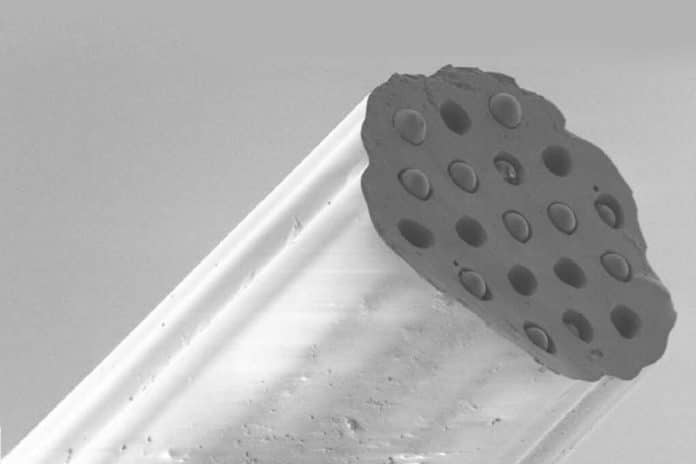Lung diseases, a common health problem, ranging from mild to severe, is also one of the leading causes of death and disability in the world. Despite significant advances in our understandings of these conditions, we still lack the knowledge about how it develops in patients suffering from pneumonia or lung injury.
Addressing this problem, a team of researchers at the University of Edinburgh have come up with a tiny, hair-sized probe that can travel deep into the lungs and measure key indicators of tissue damage deep in the lung.
It comprises of an optical fiber having a diameter of about 0.2mm that carries 19 sensors to measure changes in oxygen and pH deep in the lung, which provide essential information on the body’s reaction to disease processes. Each tissue can measure different indicators in tissues.
The new technology provides faster, accurate measurements and the flexibility for more sensors to be added to the multiplexed platform as needed. Most importantly, the technology is widely applicable to other regions of the body and could be used to aid the understanding of inflammatory and bacterial diseases, according to the experts.
Speaking about the probe, Dr. Michael Tanner, Proteus Research Fellow at Heriot-Watt University and the University of Edinburgh, said, “This research is a great example of collaboration across disciplines to tackle healthcare challenges.”
“These new methods, if taken to the clinic, will lead to novel insights in disease biology. Our aim now is to expand the number of unique sensors on this miniaturized platform to provide even more information,” he added.
This new technology in the form of the hair-sized probe could pave the way for accurate monitoring of tissue in areas where existing technologies cannot reach.
The researchers are next planning to enclose the fiber sensor assembly in biocompatible materials for testing in various clinical scenarios.
The research was done in collaboration with the UK’s Engineering and Physical Sciences Research Council (EPSRC) through the support of the Proteus consortium, which includes the Universities of Edinburgh and Bath and Heriot-Watt University. It is published in the journal Scientific Reports.
